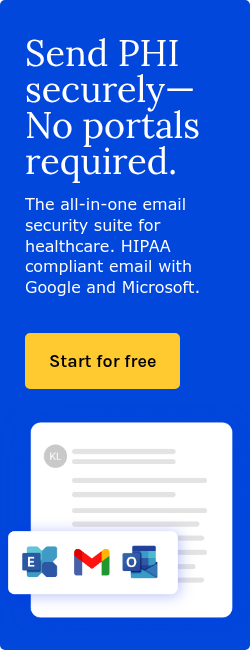3 min read
Understanding HIPAA's accounting of disclosures requirement
Liyanda Tembani
August 22, 2023

The HIPAA accounting of disclosures requirements states that covered entities must maintain a meticulous record detailing each instance of sharing a patient's protected health information (PHI), including the date of disclosure, recipient information, description of PHI disclosed, and purpose of the disclosure. Exceptions exist for disclosures made for routine treatment, billing purposes, healthcare operations, or those authorized by the individual. Individuals have the right to request and receive this information, promoting transparency and accountability in safeguarding patient privacy rights.
Understanding HIPAA accounting of disclosures
A HIPAA accounting of disclosures is a meticulous record-keeping process mandated by HIPAA. It serves as a comprehensive ledger, documenting each instance of sharing a patient's PHI. This record-keeping isn't just paperwork; it nurtures patient trust and data security. Healthcare providers maintain privacy and build trust within the healthcare system by carefully documenting how patient information is accessed and used.
Requirements for HIPAA accounting of disclosures
- Date of the disclosure: The date of the disclosure can be a timestamp for complying with HIPAA regulations. It allows the tracing of PHI flow, whether shared electronically, in person, or through other means. Specifying the exact date ensures clarity and precision in understanding data access and usage. This aids in accountability and regulatory adherence. The HHS clarifies that if a date is not known for certain, "If access to a universe of records was provided for a discrete period of time, Office for Civil Rights (OCR) interprets this provision to permit the accounting to include the range of dates (e.g., access was provided from August 1 to August 3, 2003; or during the week of August 10, 2003).".
- Recipient information: HIPAA requires that recipients of PHI be identified for accountability and transparency. Whether the recipient is another healthcare provider, a billing service, or a research institution, there must be clarity on who accessed the information. Including contact details, where possible, improves transparency and makes it easier to communicate for further clarification or inquiries, which aligns with HIPAA's emphasis on data privacy and security.
- Description of PHI disclosed: HIPAA requires a sufficiently detailed description of the PHI shared to convey its nature. This may include diagnoses, treatment plans, medication lists, or other pertinent medical data. Healthcare organizations must strike a balance between providing enough context for understanding while avoiding unnecessary detail to protect patient privacy and comply with HIPAA.
- Purpose of the disclosure: Clearly articulating the purpose, whether for treatment coordination, payment processing, or public health reporting, justifies the sharing of PHI. Providing flexibility in presentation, such as through a written explanation or attaching the original request, allows for clarity and transparency, aligning with HIPAA's overarching goal of safeguarding patient information while facilitating necessary healthcare processes.
Exceptions to the accounting requirement
While HIPAA mandates transparency in most cases, certain exceptions exist where an accounting of disclosures isn't required. According to the HHS, "These exceptions, or instances where a covered entity is not required to account for disclosures, include disclosures for treatment, payment, or health care operations and disclosures authorized by the individual. ". Additionally, disclosures explicitly authorized by the individual, such as sharing information with family members or for research purposes, are also exempt.
Providing HIPAA accounting of disclosures to individuals
Providing individuals with an accounting of disclosures should be prompt and seamless. Healthcare organizations must ensure transparency to promote trust between patients and healthcare providers. Individuals have the right to request and receive this information, empowering them to monitor and safeguard their PHI. Covered entities must respond to these requests within 60 days, with the possibility of a 30-day extension if necessary. Providing a clear and accurate accounting reassures patients that their privacy is respected and protected, reinforcing the integrity of the healthcare system and strengthening patient-provider relationships
FAQs
How often can an individual request an accounting of disclosures?
An individual can request an accounting of disclosures once every 12 months at no charge. Additional requests within the same 12-month period may incur a reasonable, cost-based fee. This ensures individuals have access to their information while allowing covered entities to manage resources effectively.
Does an accounting of disclosures include information shared with business associates?
Yes, disclosures of PHI to business associates must be included in the accounting, as they act on behalf of the covered entity. This inclusion ensures comprehensive tracking of all entities that handle PHI.
How should I respond if I cannot provide all the details for a disclosure?
If a covered entity cannot provide all details for a disclosure, it must still include as much information as possible, such as the date, recipient, and a brief description of the PHI disclosed. The entity should also explain why certain details are unavailable to maintain transparency.
Subscribe to Paubox Weekly
Every Friday we'll bring you the most important news from Paubox. Our aim is to make you smarter, faster.




